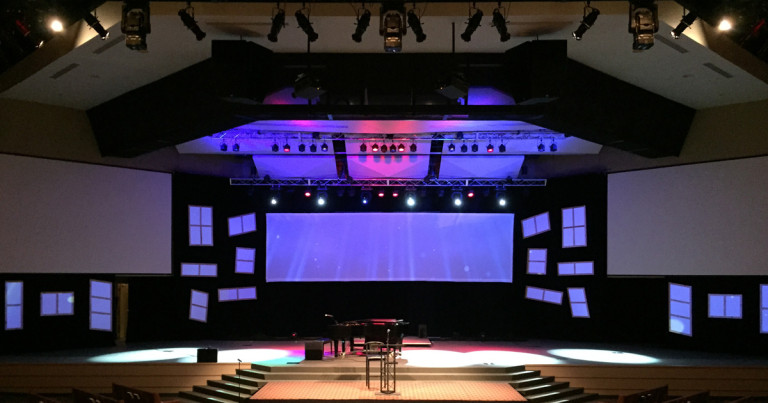Sometimes when we work with an organization like a church, a school, university, or corporate client, we hear that they already have a tech guy (or girl of course). They’ve had, or recently acquired someone who is responsible for the technical systems. Now that a larger project has come up, the question is inevitably asked, “why should we hire a technical systems designer, when we already have a tech guy?” It’s not that your guy isn’t awesome at what he or she does. It’s actually a completely different discipline.
Your guy is first and foremost, your guy
Because he’s one of your people, he can’t provide an unbiased recommendation. He might feel the need to please everyone, or that if he disagrees with someone, he might lose his job. If something goes wrong, all the finger pointing is aimed at him, and that’s hard to shoulder. He’s occupied with the responsibilities already on his plate for running the technology, and maybe even fixing it when it breaks. His job is likely to produce or provide technical supervision for events. At a church, he may be tasked with running the services. At a university, K-12 school, or corporation he may also be the IT guy. You might think of him as the producer or even technical director in a television studio.
Your guy is a producer
Especially in churches and event centers, your tech guy probably has a good sense of creating a flow, and seamlessly moving from one element to another. He is likely skilled at mixing audio, switching video, and creating a nice balance of sound in the system. He’s likely great at operating all of the equipment and getting it to do what it was designed to do. He can probably hook up all the mics, monitors, and build a nice mix for a 12-piece band, a school assembly, or an important board meeting in 20 minutes flat, but that doesn’t make him a designer.
Professional designers still need your guy. He or she is the person a designer will work with most closely. Your tech guy is going to be the most knowledgeable about how you use technical systems currently, and how you might use them in the future. They are critical to the process and partnership of a successful design.
A Professional AVL Designer
When you bring on an independent Audio, Video, Theatrical Lighting (Specialty Lighting), Technical Systems Designer, like Acoustics By Design, our recommendations are unbiased. We don’t represent any particular brands or technologies, so you know we’re not trying to sell you something. Our job is to create the design for the AVL systems, digital signage, projectors, screens, microphones, speakers, wiring, power needs, conduit, pathways, racks, amplification, switching, processing, interconnections, control systems, not to mention the detailed drawings, and followup oversight to be sure the system is installed as designed.
Professional Designers have continued their education and experience, have certifications, and the skills to design rather than just run a system. Designers are like the architects of Audio, Video, Lighting, and other technical systems. In fact, at Acoustics By Design, our AVL designs fold right into the architects drawings, using the same design products they use – like Revit®, AutoCAD®, and SketchUp.
Designers already know what works, what doesn’t, and how to develop a technical system to meet your needs, along with the specifics of the room or building. They are continuously investigating and staying ahead of the curve for new technologies. Experienced designers have designed systems for hundreds or even thousands of locations, including churches, conference centers, theaters, schools, corporate settings, and even healthcare facilities. They should also have some cross-discipline experience or resources to provide a more holistic approach to the design.
Working with Acoustics
Audio designers, working with Acoustical consultants, design systems that go hand-in-hand with the room’s native acoustics. It’s one thing to pick out some speakers based on the manufacturer’s recommendations, it’s another thing entirely to model the room and create an array of sound that works with, instead of against, the room itself. It’s important to remember, even the best electronics can’t fix poor acoustics.
Perhaps the real question is, “why wouldn’t you hire a design professional, instead of having your tech guy try to take care of it?”

Well said! It can be hard to communicate this without belittling the tech guy. This article does a nice job of pointing out what he/she is great at, but that it’s just not the same thing as AVL design.
Thanks Josh! When we work with organizations with their own technical staff, they are indispensable to what we do. At the same time, they are often put in a tight spot by those organizations who might not understand the difference.